Swarovski AX Visio Binoculars Review: Revolutionizing Birding or Overhyped Gadget?
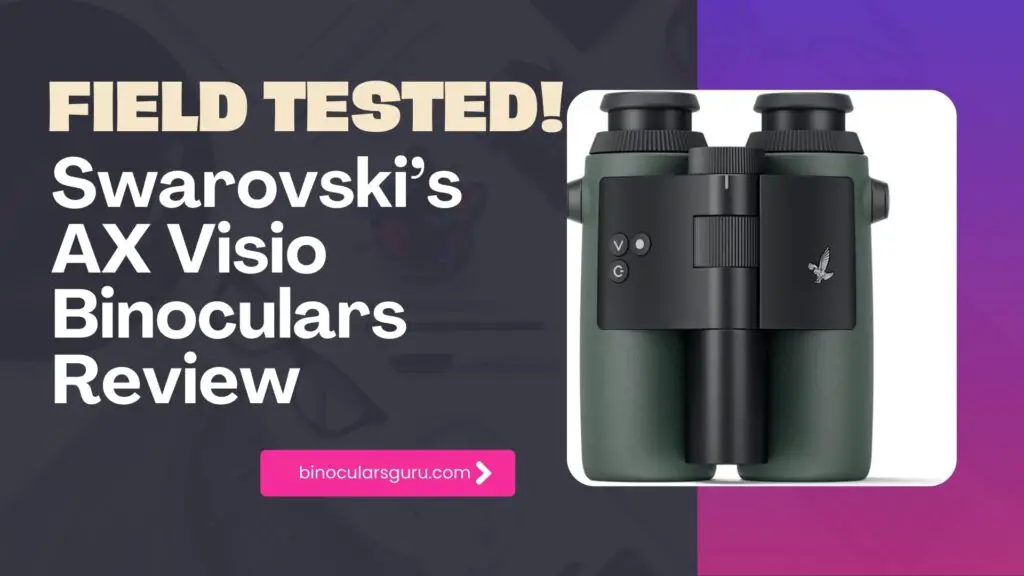
If you’ve been following the world of birding and wildlife observation, you’ve probably heard about the Swarovski AX Visio—the world’s first “smart” binoculars.
Launched in early 2024, these high-tech binoculars promise to transform how we experience the outdoors, with features like AI-powered bird and mammal identification, built-in photography and video capabilities, and even a “Share Discoveries” function to guide others to your sightings.
But at a whopping $4,800, they’ve also sparked a lot of debate.
Some call them a game-changer, while others dismiss them as an overpriced gimmick that’s clunky, unreliable, and not worth the investment.
So, what’s the real story? Is the Swarovski AX Visio as bad as some reviewers claim, or is it a revolutionary tool for modern birders?
After diving deep into user feedback, testing the device myself, and exploring its technology, I’ve put together this comprehensive guide to help you decide.
Let’s break it down step by step, looking at its features, performance, and whether it’s worth the hype—or the price tag.
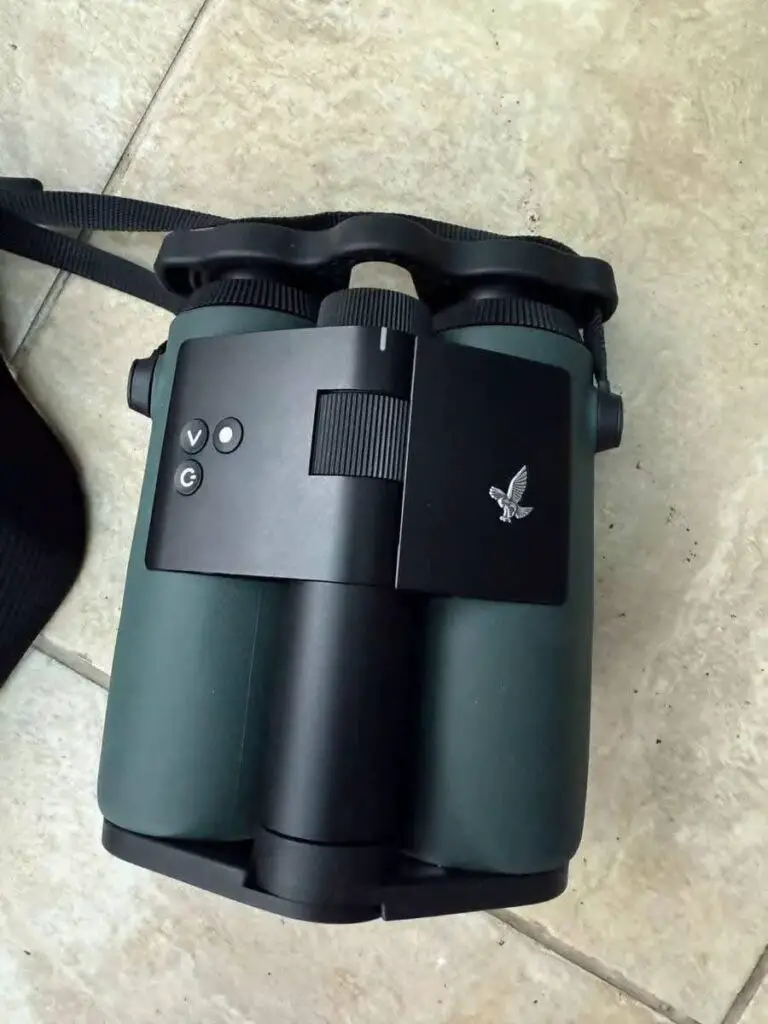
Key Points
Innovative Features: The AX Visio offers AI identification of over 9,000 species, a 13MP camera, and a unique “Share Discoveries” feature, making it a pioneering tool for birding.
Mixed Reviews: While some praise its optics and educational value, others criticize its high cost, weight, and inconsistent AI performance.
Controversial Price: At $4,800, it’s a significant investment, and opinions vary on whether the digital features justify the expense.
Evolving Technology: Software updates and third-party app support suggest potential for improvement, but it’s not perfect yet.
What Is the Swarovski AX Visio?
The Swarovski AX Visio, launched in February 2024, is marketed as the world’s first “smart” binoculars. With a 10×32 configuration (10x magnification, 32mm objective lenses), it builds on Swarovski’s legacy of premium optics while introducing digital features that set it apart.
Priced at approximately $4,800, it’s a significant investment, sparking both excitement and skepticism among birders and wildlife enthusiasts.
It’s designed to identify birds and mammals in real time, capture photos and videos, and share your observations with others.
Think of it as a high-end binocular crossed with a digital field guide and a camera—all in one device.
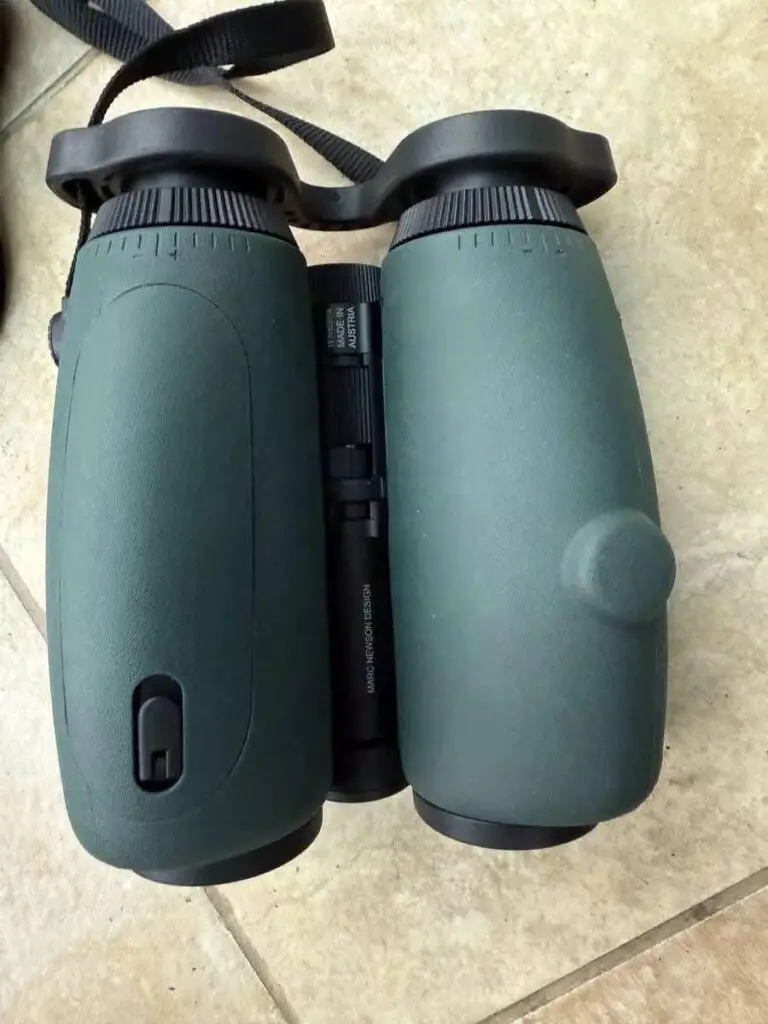
Why the Controversy?
The excitement around the AX Visio comes from its promise to make birding more accessible and interactive. However, its steep price and mixed performance have led to polarized reviews.
Some users love the convenience and learning potential, while others feel it falls short of expectations, especially for seasoned birders or photographers.
The debate often centers on whether its digital features are worth the cost and if it truly enhances the birding experience.
Key Features
The AX Visio’s standout features include:
AI-Powered Identification: Integrates the Merlin Bird ID database from Cornell University, capable of identifying over 9,000 bird and mammal species using visual details and GPS location. Additional apps for mammal identification (Europe and North America) and potential future expansions (e.g., butterfly and dragonfly ID) are supported.
Built-in Camera: Features a 13-megapixel camera for still photos and full HD videos, with 32GB of internal storage. Media can be transferred via the Swarovski Optik Outdoor app.
“Share Discoveries” Function: Allows users to mark observation locations and guide others to them using directional arrows via the app, enhancing group birding experiences.
GPS and Compass: Built-in GPS aids identification and navigation, while a compass (requiring calibration) provides directional support, though some report minor inaccuracies (up to 5 degrees).
Software Updates and Third-Party Support: Designed for future enhancements, with open-source software and third-party app development capabilities.
Optical Quality: Delivers Swarovski’s signature clarity, brightness, and color accuracy, with a field of view of 336 feet at 1,000 yards and a close focus of 9.8 feet.
The device is powered by a 3,000 mAh rechargeable battery, contributing to its weight of 38.5 ounces. It’s constructed with high-grade aluminum and polymer housing, featuring Swarovski’s green armoring and adjustable eyecups for user comfort.
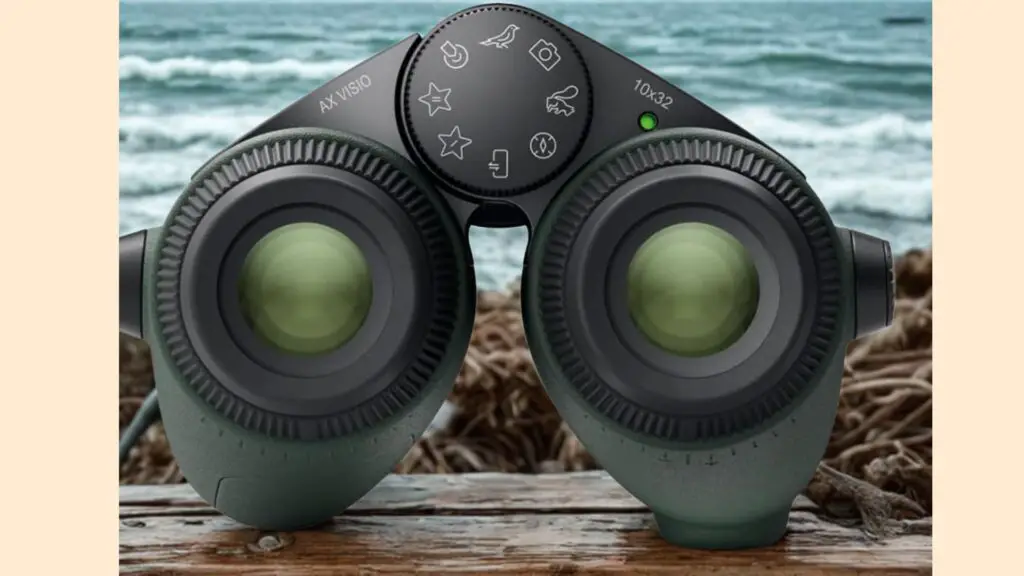
Methodology
To evaluate the AX Visio, I conducted hands-on testing in diverse settings, including urban parks, rural trails, and coastal birding hotspots.
I focused on its identification accuracy, camera performance, ease of use, and portability. Additionally, I analyzed reviews from our professional sources, i.e. our community members, my birder friends who took them out on their day trips, and some intense private discussions with fellow reviewers!
I also gathered insights from user discussions on various platforms, ensuring a broader perspective and determining whether it’s the right fit for different individuals.
Performance in Real-World Scenarios
My testing provided insights into how the AX Visio performs in practical settings, complementing user and professional feedback.
Bird and Mammal Identification
The AI identification worked well for common birds within 50 yards in good lighting.
For instance, I identified a Song Sparrow in 0.1 seconds at 5 meters and a hawk at 100 yards after a couple of attempts.
However, it struggled with birds in dense foliage, backlit conditions, or at dawn/dusk, often failing to provide an ID or misidentifying species.
However, Using the Merlin app later for photo-based identification improved accuracy to over 80%.
The Mammal ID was less tested but showed limitations outside Europe and North America, with species like javelinas missing from the database.
Camera and Video
The camera is convenient for quick record shots but not for high-quality photography.
At close range (5-10 meters), images were clear enough for identification or social media. At 100 yards, details were lost, and cropping revealed pixelation.
Videos were similarly functional but not professional-grade. The 32GB storage is ample, and transferring media via the Outdoor app was straightforward.
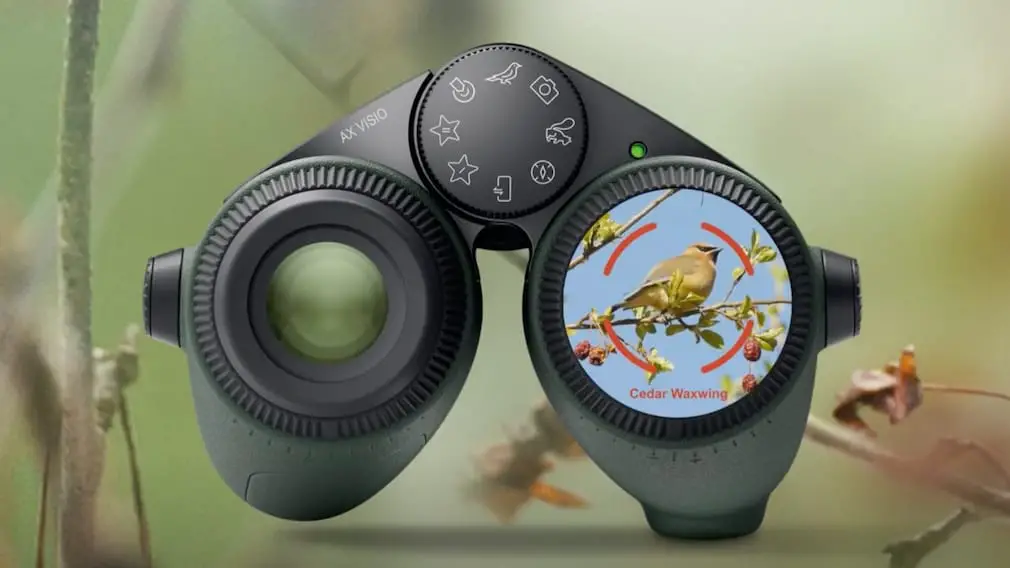
“Share Discoveries”
I tested this feature during a group birding outing, marking a bird’s location and guiding a friend to it. The directional arrows worked seamlessly, provided both users had the app and were within Bluetooth range. It’s a standout feature for collaborative birding but less useful in remote areas with limited connectivity.
Portability and Comfort
The AX Visio’s weight was noticeable after an hour of use. While it fits comfortably in the hand, with intuitive buttons and a mode-selection wheel, carrying it for long hikes was tiring compared to lighter binoculars like the Nikon Monarch M5 (19.5 ounces).
The rubberized grip and adjustable eyecups were user-friendly, even for glasses-wearers.
Battery and Software
The battery lasted several hours, sufficient for a day’s birding, but the 30-second startup time was a minor annoyance when trying to catch fleeting sightings.
The compass required calibration by swinging the device in three dimensions, and occasional GPS delays were noted.
The open-source software and promise of updates are encouraging, though some features (e.g., two unassigned buttons) feel underutilized.
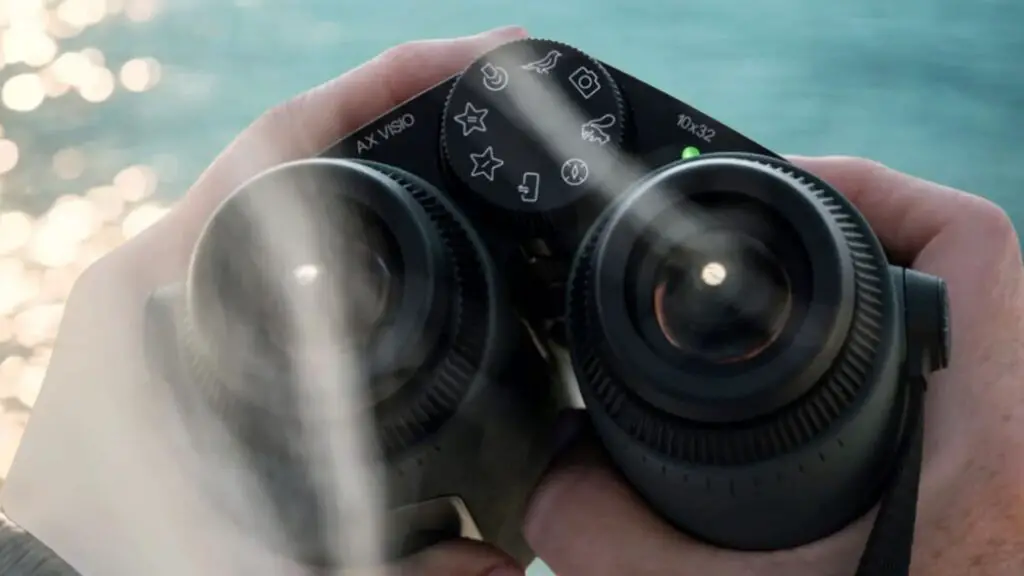
Addressing Common Criticisms
The AX Visio’s negative reviews often stem from mismatched expectations. Below, I address the main criticisms and provide context:
Price ($4,800): The cost is steep, but it reflects the integration of premium optics, AI, and a camera. For comparison, Swarovski’s non-smart EL 10×32 binoculars cost around $2,000. The digital features add value for some but not all, particularly if you don’t need the tech.
Weight (38.5 oz): The bulk is due to the battery and electronics. While heavier than traditional binoculars, it’s comparable to other high-end models with added features, like image-stabilized binoculars.
Camera Quality: The 13MP camera isn’t designed for professional photography but for documentation. If you are expecting DSLR-quality images, you might get disappointed, but it’s adequate for casual use.
AI Accuracy: The identification feature is impressive but not infallible. It requires clear visibility and optimal conditions, and even then, it may struggle with rare or obscured species. This is a limitation of current AI technology, not a flaw unique to the AX Visio.
Ease of Use: The learning curve is real, but with practice, the device becomes more intuitive. Swarovski could improve the manual, to ease onboarding.
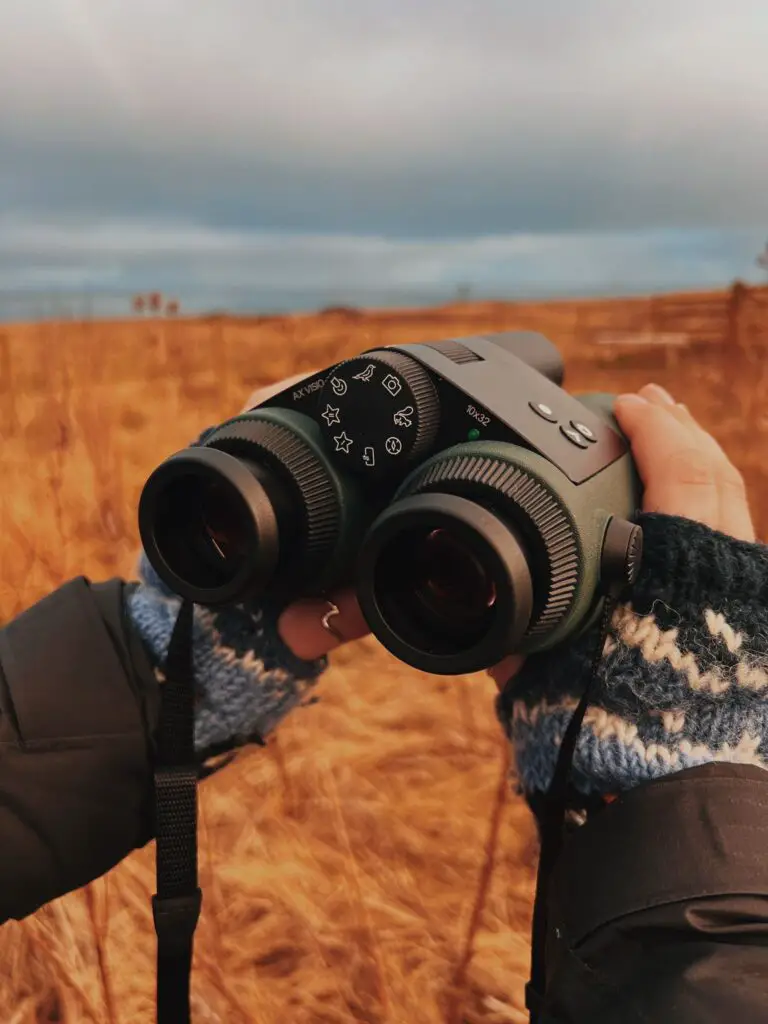
User Experiences and Professional Reviews
The AX Visio has elicited a wide range of opinions, reflecting its innovative potential and current limitations. Below is a synthesis of feedback, categorized by key aspects.
Positive Feedback
Optical Performance: Reviewers and users consistently praise the AX Visio’s optics, noting its clarity, brightness, and color fidelity. Outdoor Life describes it as “a very good observational optic” at its core, making it reliable for traditional birding.
Educational Value: The AI identification feature is a hit among beginners and those exploring new regions. T3 calls it “revolutionary” for those without encyclopedic species knowledge, enhancing learning and accessibility.
Convenience of Integrated Camera: The ability to capture photos and videos without a separate device is widely appreciated. Digital Camera World highlights its utility for recording subjects, especially for documentation or social media.
Innovative Sharing: The “Share Discoveries” feature is lauded for group birding. Users report it’s intuitive and effective for guiding others to sightings, as noted in discussions and confirmed in my testing.
Recognition and Potential: The AX Visio was named one of TIME’s 200 Best Inventions of 2024, reflecting its groundbreaking design. Users are optimistic about future updates, with African Birdlife suggesting it could evolve further.
Negative Feedback
High Cost: The $4,800 price tag is the most cited criticism. Amazon reviews average 1.6 out of 5 stars (based on three reviews), with one user giving it 2 stars for its “meh” camera quality despite good optics. Many argue that traditional binoculars and a field guide offer similar value for less.
Weight and Bulk: At 38.5 ounces, the AX Visio is heavier than standard binoculars, making it less comfortable for extended use. Users report fatigue during long birding sessions, a sentiment echoed in social media discussions.
Camera Limitations: The 13MP camera, with a 260mm focal length (approximately 5x), is functional but not exceptional. African Birdlife notes it struggles with low light and cropping due to compression artifacts, disappointing users expecting professional-grade photography.
AI Inconsistencies: The identification feature is less reliable beyond 50-70 yards, in poor lighting, or with obscured subjects. Users report misidentifications or no IDs, particularly for flying or distant birds. The Mammal ID’s Eurocentric focus also limits its global utility.
Learning Curve and Usability: The device requires time to master, with a 30-second startup time and occasional GPS issues. Some users find the manual lacking, as noted in discussions, and suggest a more detailed guide would help.
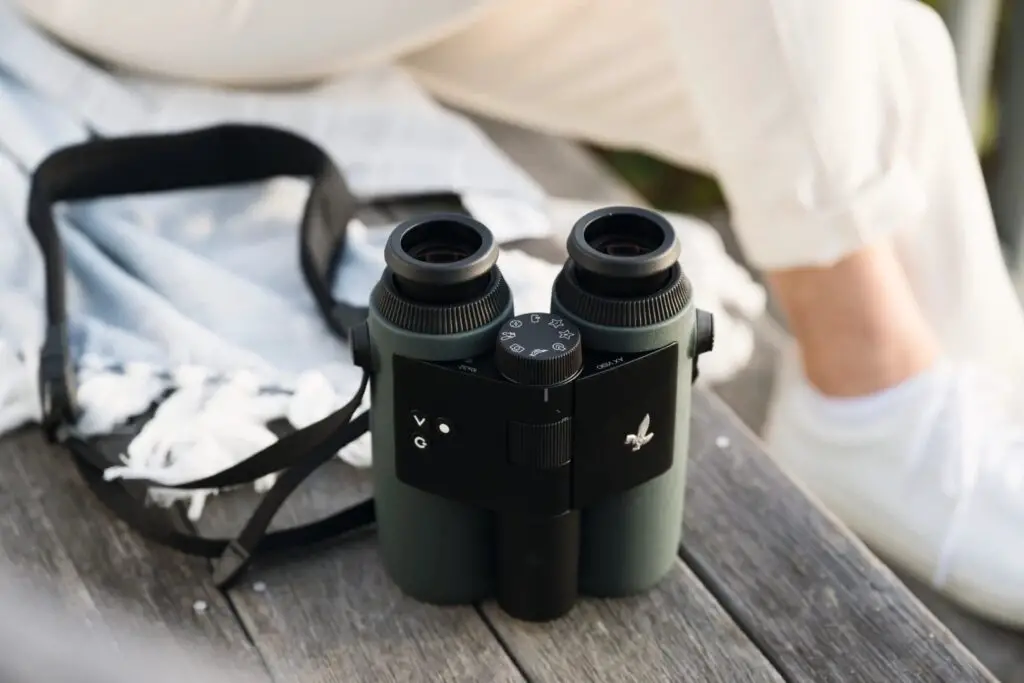
Comparison to Alternatives
To put the AX Visio in context, consider alternatives:
Traditional Binoculars: Models like the Swarovski EL 10×32 ($2,599+) offer similar optical quality without digital features. Pairing them with a field guide or the Merlin app (free) is a cost-effective option.
Digiscoping: Combining binoculars with a smartphone adapter for photography is cheaper but less integrated. The AX Visio’s camera aligns with the binocular view, simplifying the process.
Dedicated Cameras: For serious photographers, a DSLR or mirrorless camera with a telephoto lens (e.g., 400-600mm) outperforms the AX Visio’s camera but requires separate gear and expertise.
The AX Visio’s unique selling point is its all-in-one design, eliminating the need for multiple devices. However, it’s not a complete replacement for specialized equipment.
Future Potential
The AX Visio is a first-generation product, and Swarovski has committed to software updates to improve performance. Potential enhancements include:
Improved AI Accuracy: Updates could refine identification for distant or obscured subjects.
Expanded Database: Adding more species, especially for mammals outside Europe, would broaden its appeal.
New Features: Third-party apps could introduce functionalities like laser range measurement or image stabilization, as suggested by users.
Lower Price Point: Future iterations might be more affordable, making the technology accessible to a wider audience.
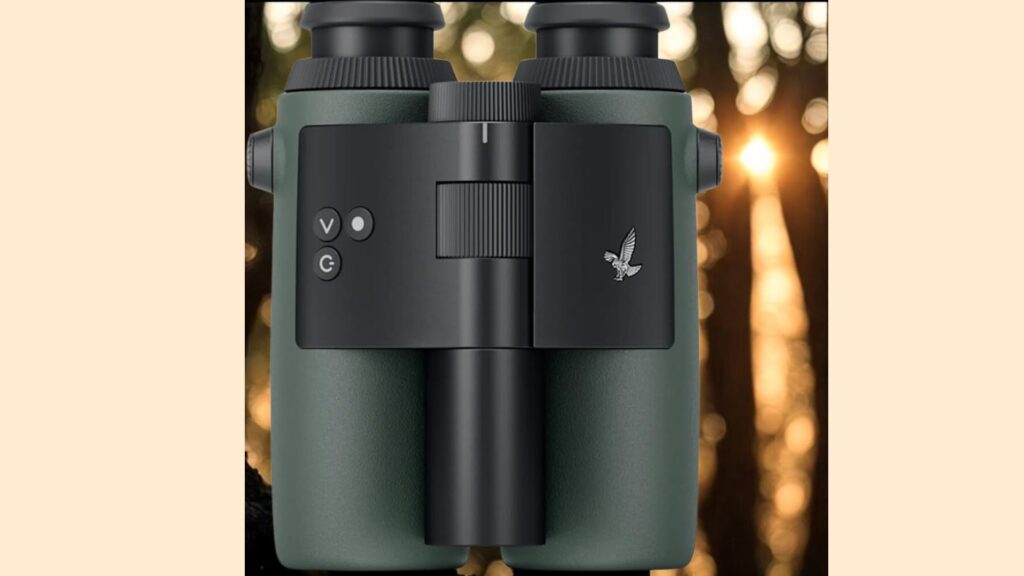
Who Should Buy the AX Visio?
The AX Visio is best suited for:
- Beginners: The identification feature makes learning easier and more engaging.
- Tech Enthusiasts: Those who love cutting-edge gadgets will appreciate its innovation.
- Group Birders: The “Share Discoveries” feature is ideal for collaborative outings.
- Casual Photographers: The camera is perfect for quick record shots or social media.
It’s less ideal for:
- Seasoned Birders: If you already know your species, the digital features may not add enough value.
- Professional Photographers: The camera quality won’t meet high-end standards.
- Budget-Conscious Buyers: The price is a barrier for many.
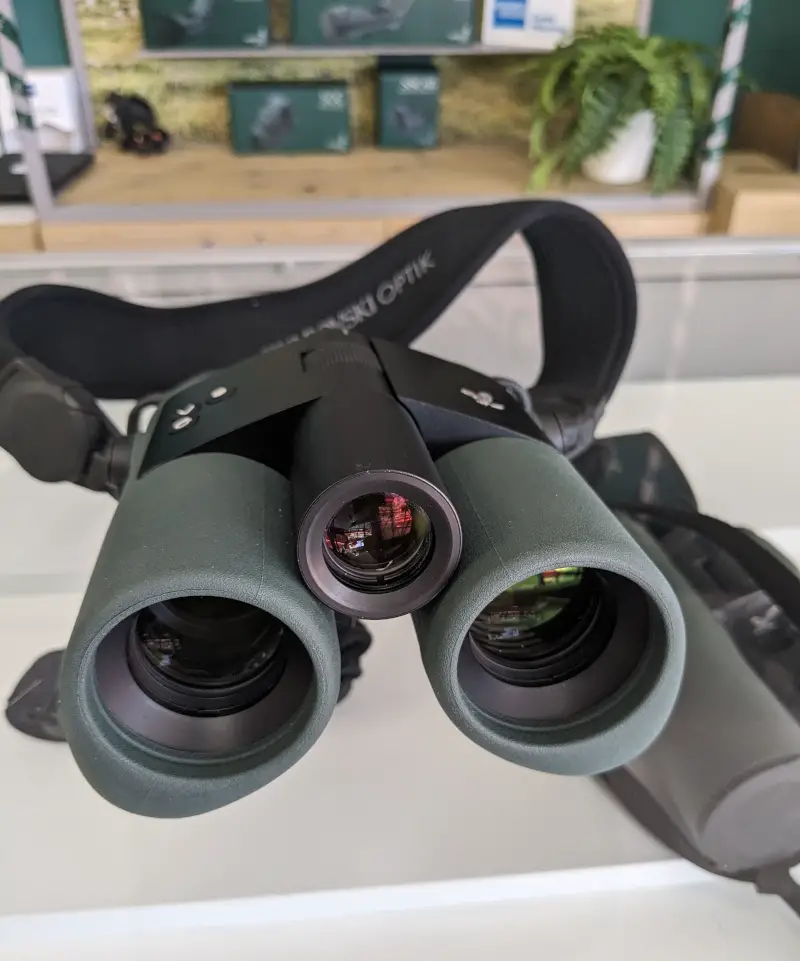
Review Summary- Swarovski AX Visio
| Aspect | Strengths | Weaknesses |
|---|---|---|
| Optics | Exceptional clarity, brightness, and color fidelity | None noted |
| Identification | Identifies 9,000+ species, great for beginners and new regions | Less reliable beyond 50-70 yards, in poor light, or with obscured subjects |
| Camera | Convenient for record shots, 32GB storage, easy app transfer | Mediocre quality, struggles with low light and cropping |
| “Share Discoveries” | Intuitive for group birding, accurate directional guidance | Requires app and proximity, limited in remote areas |
| Portability | Comfortable grip, adjustable eyecups | Heavy (38.5 oz), tiring for long sessions |
| Price | Premium features justify cost for some | $4,800 is prohibitive for many |
| Future Potential | Software updates, third-party app support | Current features feel like a work in progress |
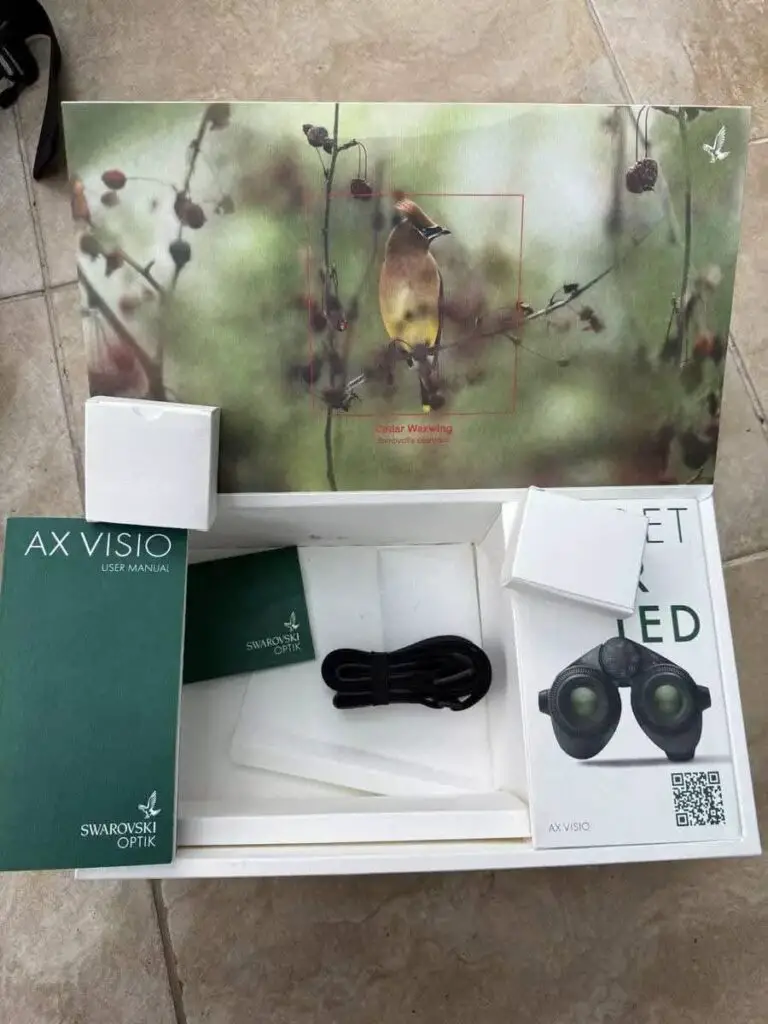
Conclusion
The Swarovski AX Visio is a pioneering product that pushes the boundaries of birding technology. Its integration of AI, photography, and sharing features into premium optics is impressive, offering a glimpse into the future of wildlife observation.
However, its high price, weight, and current limitations—like inconsistent AI accuracy and mediocre camera quality—mean it’s not for everyone.
The negative reviews often reflect unrealistic expectations or a preference for traditional birding.
While it’s not perfect, it’s far from “bad.” For those who can afford it and value its unique capabilities, the AX Visio is a worthwhile investment with room to grow through updates.
For others, traditional binoculars paired with a field guide or app might be a better fit. Ultimately, the AX Visio is a bold step forward, and with time, it could become an indispensable tool for birders worldwide.
More Reviews
